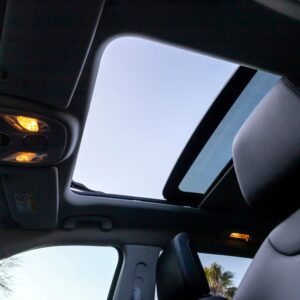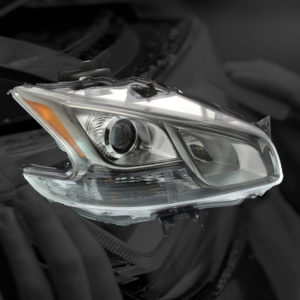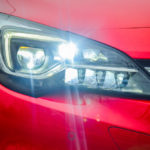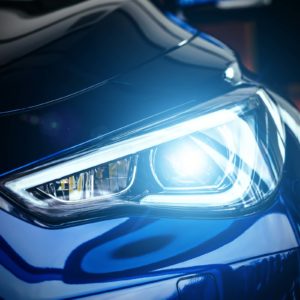Automatic lights are convenient because they handle the chore of operating the lights while you concentrate on other driving tasks. However, there are situations when you need to turn the lights off and keep them that way while keeping the engine running. In particular, you might want to turn the automatic headlights off sometimes.
How to Turn Headlights Off When You Park
Here’s how you can turn off the automatic headlights temporarily:
Turn It Off With the Headlight Switch
You can usually use a headlight switch to turn the headlights off and then on again. If your vehicle has automatic headlights, the switch can turn them off just as effectively.
Most headlight switches are located on the turn signal switch stalk that juts from the left side of the steering column. If you cannot find the switch on the stalk, check the dash. In case your search turns up nothing, consult your owner’s manual.
To turn the automatic headlights off, move the headlight switch to the off position. The headlights won’t turn on until you switch them back to automatic mode.

Pull the Relevant Fuse
You can also pull the fuse that connects to your car’s lights, including the headlights. The fuse permits the passage of electrical current within the safe voltage range. In case of a power surge, the fuse blows, cutting the connection and preventing dangerously high voltage current from reaching the wiring or lighting.
Removing the fuse will have the same effect as a blown fuse. The current can’t reach the headlights, preventing the lights from turning on.
Look for the fuse box. If you can’t find it, check your owner’s manual. In addition to the fuse box’s location, the manual should also show you which fuse connects to the headlights and how to pull it.
After pulling the fuse responsible for the lights, start your vehicle. The lights shouldn’t turn on.
The drawback to this approach is that you need to return the fuse to the fuse box before leaving the premises. Driving at night without working headlights is prohibited by law.
How to Turn the Automatic Daylight Running Lights Off
In addition to the headlights, you might also need to turn off the daylight running lights. They turn on when you get the engine running and increase your car’s visibility to other drivers. Unlike other lights, they’re not meant to illuminate the road.
You can try to turn the daylight running lights off using the parking brake.
Some cars turn off their automatic daylight running lights when you pull the parking brake. After all, parked cars don’t need the running lights illuminated.
Of course, the process of turning off the daylight running lights by engaging the parking brakes might differ between vehicle models. Some cars only need you to pull or turn the parking brake lever. When in doubt, check your owner’s manual.
A Quick Guide to Automatic Headlights
More and more cars are equipped with automatic headlights that activate when it gets dark outside the vehicle. Here are their advantages
Convenience
Automatic headlights can turn themselves on and off as needed so that drivers don’t have to.
Road Illumination
Like ordinary headlights, automatic headlights illuminate the road ahead of your car. Driving at night or during bad weather becomes easier if you can see the road and other vehicles in front of you.
Concentration Aid
Automatic headlights indirectly help you concentrate on driving your car. You don’t have to worry about turning the headlights off or on.
Road Safety
While automatic headlights aren’t safety devices like bumpers and airbags, they help keep you safe while driving. They reduce the risk of road accidents by eliminating a potential distraction.
How Do Automatic Headlights Work?
Automatic headlight sensors determine if it’s bright or dark outside your car. Mounted on the dashboard or windshield, they turn the automatic headlights on and off without your input.
Types of Automatic Headlights
Automatic headlights come in several versions, each with a different type of sensor:
Light-Sensitive Sensor-Based Automatic Headlights
These automatic headlights respond to ambient light levels. They use light sensors to determine how bright or dark it is outside the vehicle.
Rain-Sensitive Sensor-Based Automatic Headlights
This type measures moisture levels on the windshield. They turn on when it rains, making them very useful in areas with wet climates.
Adaptive Automatic Headlights
The most complex type, adaptive automatic headlights combine sensors with motors that can adjust the direction the lights are pointing at. They can also change their brightness to suit the ambient light levels.
Adaptive automatic headlights move in the same direction as your car, making it easier for you to see around corners.
Common Features of Automatic Headlights
There’s more to automatic headlights than simply turning on when it’s dark and turning off when it’s bright. Here are the features that you can take advantage of:
Adjustable Sensitivity Settings
You can usually tweak the sensitivity of the automatic headlight sensors. If you don’t want the automatic headlights turning on and off at the slightest shift in light or moisture levels, you can reduce the sensitivity.
Automatic Headlight Delay
Some automatic headlight systems have a delay function that enables them to briefly stay illuminated after you turn off the engine. Having the headlights still running when you step out of your car at night can help you avoid accidents.
Auto-High Beam Assist
Finally, there’s the auto-high beam assist function. It enables the automatic headlights to switch between low-beam and high-beam modes.
The auto-high beam assist relies on sensors as its artificial eyes. It looks for the headlight beams from other cars. Then, it adjusts the angle and height of the beams from your car’s headlights to avoid blinding other drivers on the road.
Any information provided on this Website is for informational purposes only and is not intended to replace consultation with a professional mechanic. The accuracy and timeliness of the information may change from the time of publication.



















